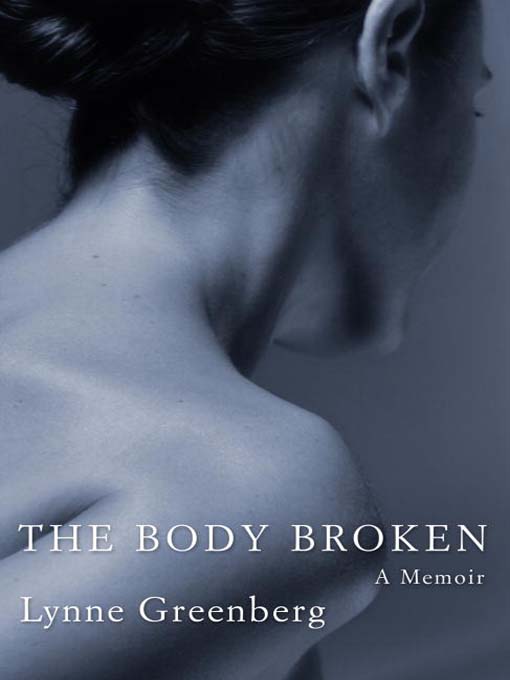
The Body Broken
A Memoir
کتاب های مرتبط
- اطلاعات
- نقد و بررسی
- دیدگاه کاربران
نقد و بررسی

November 24, 2008
Twenty-two years after recovering from a devastating car crash when she was 19, Greenberg, a professor at New York City's Hunter College, began experiencing unbearable neck pain. Several hospital visits and X-rays later, it turns out her miraculous recovery after the accident wasn't quite that: one of her vertebrae was still fractured. Greenberg chronicles the two years that follow: the contradicting doctor diagnoses; the descent into drugs and depression; the unraveling of her relationship with her two young children. Harrowing stuff, and when Greenberg keeps her prose spare and direct, as when she describes with cold, gory precision watching her leg being sewn back together, the result is powerful. But Greenberg's account often reads like an extended treatise on pain, overly reliant on metaphor as opposed to anecdote to describe her experience, comparing it, say, to Adam and Eve's fall in Milton's Paradise Lost
(Greenberg's field is 17th-century British literature). Otherwise engaging, Greenberg's narrative is a revealing, personal journey through physical trauma.

February 1, 2009
An academic steeped in the works of Milton loses her personal paradise when a decades-old neck injury resurfaces, bringing with it excruciating pain.
Greenberg (English/Hunter Coll.) divides her memoir into two parts:"Paradise Lost" and"A Paradise Within." Chapter titles include"Doom,""Descent into the Underworld,""Anxiety,""Loneliness" and"Grief" in Part I, and"Hope,""Patience,""Courage" and"Acceptance" in Part II. Each chapter opens with a quotation, sometimes from Milton but often from a modern poet—Sylvia Plath, Linda Pastan, Adrienne Rich, Jane Kenyon, Louise Glück, T.S. Eliot—whose words have special significance for the author. (English teacher that she is, Greenberg often delivers an illuminating mini-lecture on the selection.) Her Eden included the perfect job, a home in a close-knit, friendly Brooklyn neighborhood, a loving husband, son and daughter. She was, she says,"the luckiest girl in the world." Bad luck came in the form of a fragile, unhealed broken bone in her neck and subsequent, apparently permanent, damage to the nearby nerves. Greenberg unflinchingly details her desperate search for medical and surgical solutions, her physical and mental collapse, her addiction to and attempted withdrawal from pain-numbing drugs and the unraveling of her home, social and professional lives. Eventually she became a patient in a pain clinic that changed her perspective and gave her hope that she could learn to live with chronic pain and rebuild her life. Acknowledging that a formerly near-perfect existence has changed forever, Greenberg does not paint an overly rosy picture of her newfound paradise. But her story demonstrates that it is possible to live joyously within the limitations of one's body, to have pain but not be dominated by it.
Absorbing memoir of special interest to anyone living with chronic pain.
(COPYRIGHT (2009) KIRKUS REVIEWS/NIELSEN BUSINESS MEDIA, INC. ALL RIGHTS RESERVED.)

March 1, 2009
After first-time memoirist Greenberg survived a harrowing car crash at 19, her broken neck supposedly healed. In 2006, however, debilitating pain returned. In this heartbreaking, inspiring story of the lack of resources and understanding available to chronic pain sufferers, Greenberg finds the determination to live life to the fullest. Lyrical, vivid writing makes this an essential read for those marginalized by the health-care system and medical providers alike.E.B.
Copyright 2009 Library Journal, LLC Used with permission.

February 1, 2009
Greenbergs account of her efforts to be cured of chronic neck pain ought to inspire chronic-pain sufferers not to give up. Out of the blue this fortysomething mother of two was plunged into unrelenting pain. It was, doctors said, a delayed consequence of injuries resulting from a car accident when she was 19. At that time, Greenberg was diagnosed with a neck fracture, outfitted with a brace, and recoveredor so everyone thoughtenough to return to school in the fall and even take dance classes. Twenty years later, sudden, debilitating pain impelled her quest to cure or numb it enough so she could resume a normal life. She holds nothing back, from those physicians who insisted her pain was psychological, thus untreatable, to the surgeon who promised recovery but, when she failed to feel better, washed his hands of her, insisting his surgery had been a success, regardless. She was all but hopeless until an in-patient treatment facility helped her restore herself and her life. A bold story that proves it pays to persevere.(Reprinted with permission of Booklist, copyright 2009, American Library Association.)

























دیدگاه کاربران